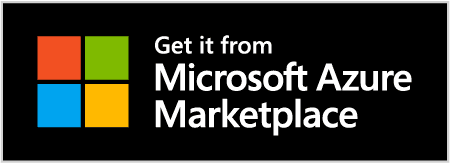SitusAMC
Data breach at SitusAMC, a financial services vendor, exposed homeowner and empl...
For millions of Americans, their mortgage is a deeply personal, often stressful, cornerstone of their financial life. They deal with their bank, make their payments, and trust that the complex machinery behind the scenes is secure. That trust was fractured earlier this year when SitusAMC, a powerhouse in the commercial and residential real estate finance industry, announced it had been the victim of a massive ransomware attack that exposed the sensitive data of over 1.5 million individuals.
But the breach of SitusAMC is more than just another entry in the long list of corporate cyberattacks. A deeper investigation reveals a story of critical contextual nuances: it’s a breach not of a consumer-facing company, but of a critical, invisible linchpin in the financial system; an attack that highlights the profound risks of third-party service providers; and an event whose fallout lands disproportionately on individuals who never knew the company's name.
**The "Invisible" Target with a Treasure Trove of Data**
Unlike a breach at a retailer or a social media platform, SitusAMC operates deep in the background. Most consumers have never heard of them, yet the company provides "servicing" and "sub-servicing" for a vast portfolio of mortgages. This means they are responsible for the administrative backbone of loans—processing payments, managing escrow accounts, handling foreclosures, and, crucially, storing the immense volumes of documentation required by these processes.
_"This is the critical nuance that makes this breach so severe,"_ explains Dr. Aris Thorne, a cybersecurity professor at Georgetown University. "SitusAMC is what's known as a 'target-rich environment.' They don't just have one type of data; they have *all* of it. For a single individual, an attacker could potentially get their Social Security number, mortgage application, tax returns, credit history, bank account details, and driver's license copy—all from one place. It's a one-stop shop for identity theft."
The attackers, the notorious ALPHV/BlackCat ransomware cartel, knew exactly what they were targeting. They didn't just lock files; they exfiltrated over 2 terabytes of data, holding it for ransom with the threat of releasing it onto the dark web.
**When a "Vendor" Breach Becomes "Your" Breach**
The second critical nuance lies in the chain of responsibility. Many of the affected individuals did not have a direct relationship with SitusAMC. Their loan was with a local bank or a major lender, which had contracted SitusAMC to handle the back-office work.
"This creates a confusing and fragmented response for the victim," says Maria Flores, a consumer advocate with the National Fair Housing Alliance. "You get a letter from a company you've never heard of, about a loan you have with your bank. It erodes trust and creates immense confusion. Who is ultimately responsible? Your bank will often point to the vendor, and the vendor points to the fact that they are acting on the bank's behalf. The consumer is left in the middle."
This "supply chain" attack vector is a growing nightmare for regulators. The breach didn't happen at the point of sale (the bank), but at a critical support node. It underscores a harsh reality: a company's cybersecurity is only as strong as the weakest link in its extended network of partners and vendors.
**A Legacy of Vulnerability**
The data exposed isn't just current information. The breach includes data from "former homeowners," a phrase that carries its own heavy weight.
"For individuals who went through a foreclosure, a short sale, or even those who simply paid off their loan years ago, this breach reopens old wounds," Flores notes. "Their financial situation may have been precarious during that time, and this data provides a snapshot of their most vulnerable moment. To have that exposed adds a layer of psychological distress to the financial risk."
Furthermore, for current homeowners, the breach creates a unique form of anxiety. The theft of ongoing mortgage and financial account information means the threat isn't just about a new credit card being opened fraudulently; it's about the potential for sophisticated fraud targeting their largest asset—their home.
**A Tepid Response in a High-Stakes Environment**
SitusAMC's response, while following standard protocol, has been criticized for not matching the severity of the exposed data. The offer of 24 months of credit monitoring, while standard, is seen by experts as a band-aid on a gaping wound.
"Credit monitoring is reactive; it tells you *after* something bad has happened," says Dr. Thorne. "With the depth of information stolen—including SSNs and driver's licenses—the threat of identity theft is lifelong. The criminals can sit on this data for years before using it. Two years of monitoring is insufficient for a breach of this sensitivity."
The incident has prompted calls for stricter regulations governing third-party vendors in the financial sector and for mandatory, long-term identity restoration services, rather than temporary monitoring, in cases involving core identity documents.
As the investigation continues and lawsuits mount, the SitusAMC breach serves as a stark lesson. It’s a reminder that in our interconnected financial ecosystem, risk is not always visible, and trust in one company often means implicit trust in a dozen others behind the curtain. For the millions affected, the event is a jarring introduction to a company they never knew held the keys to their financial identity.






